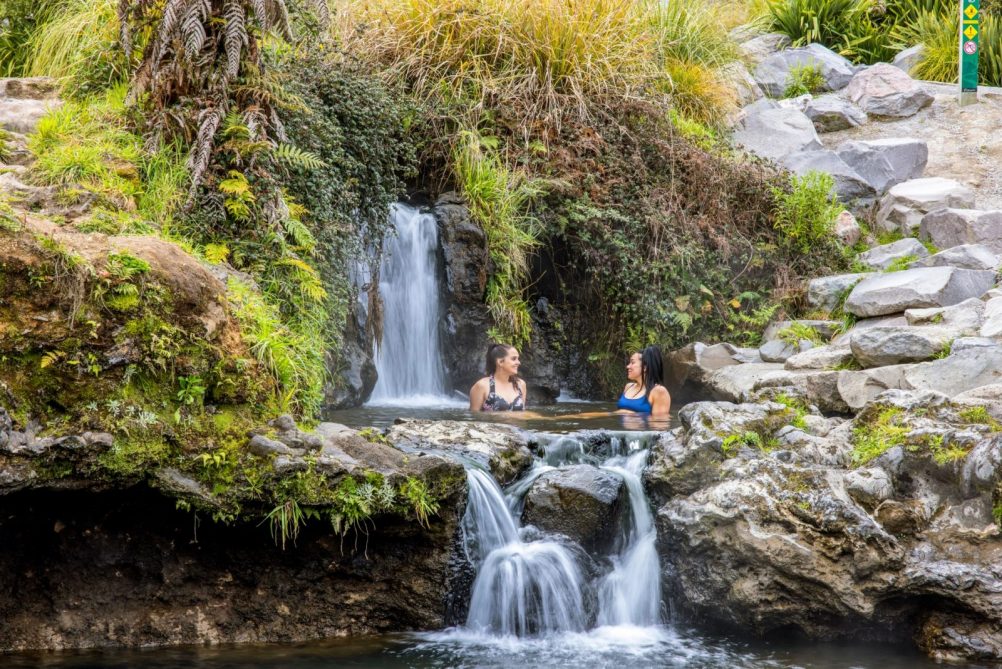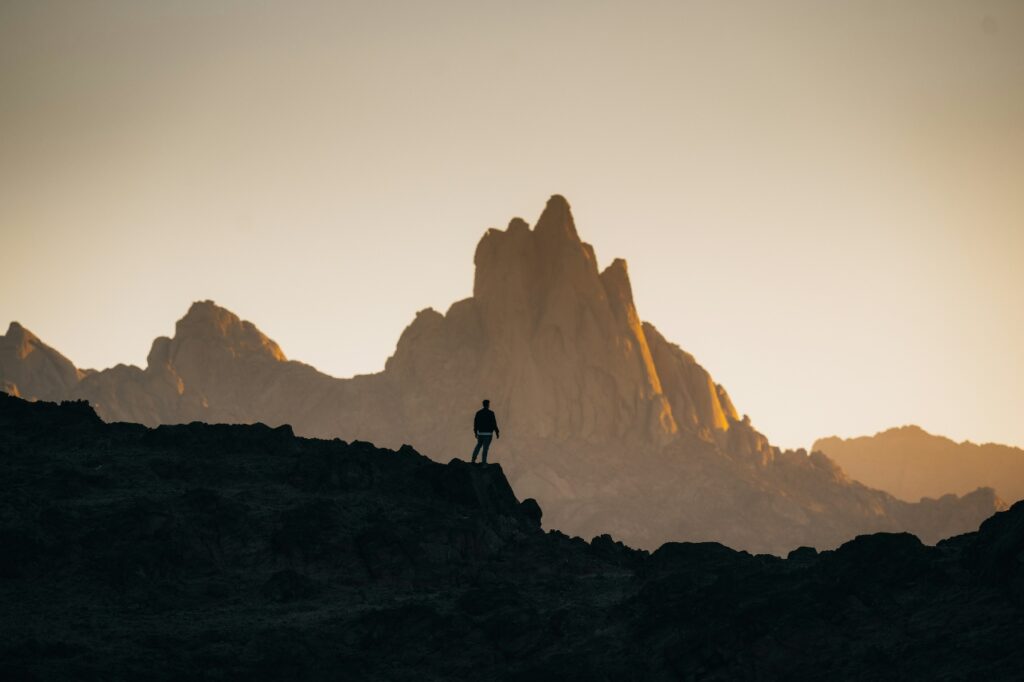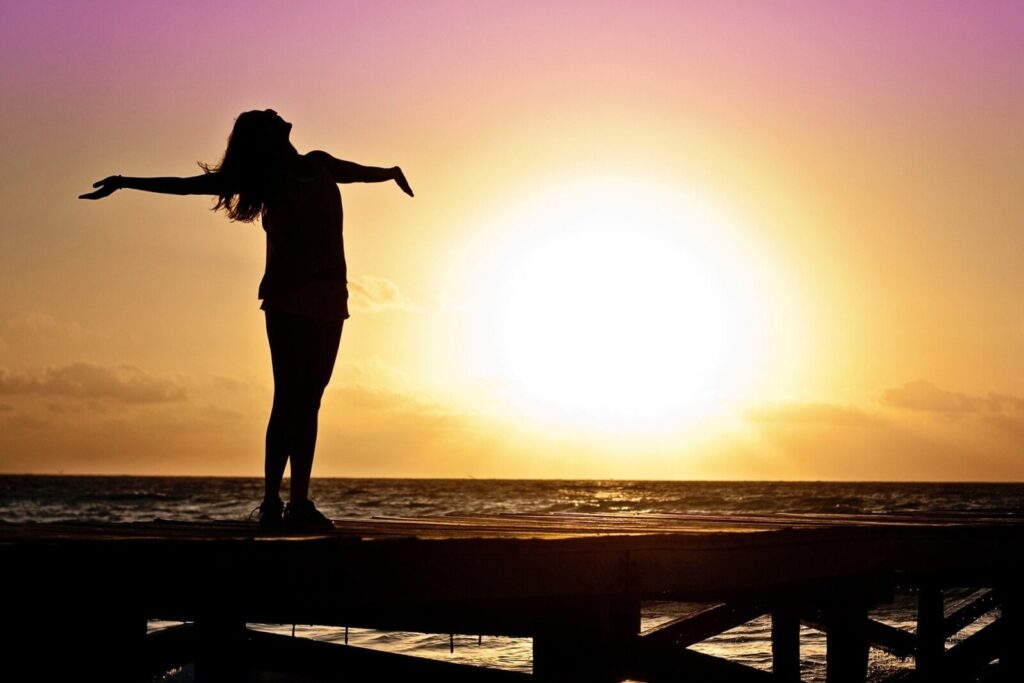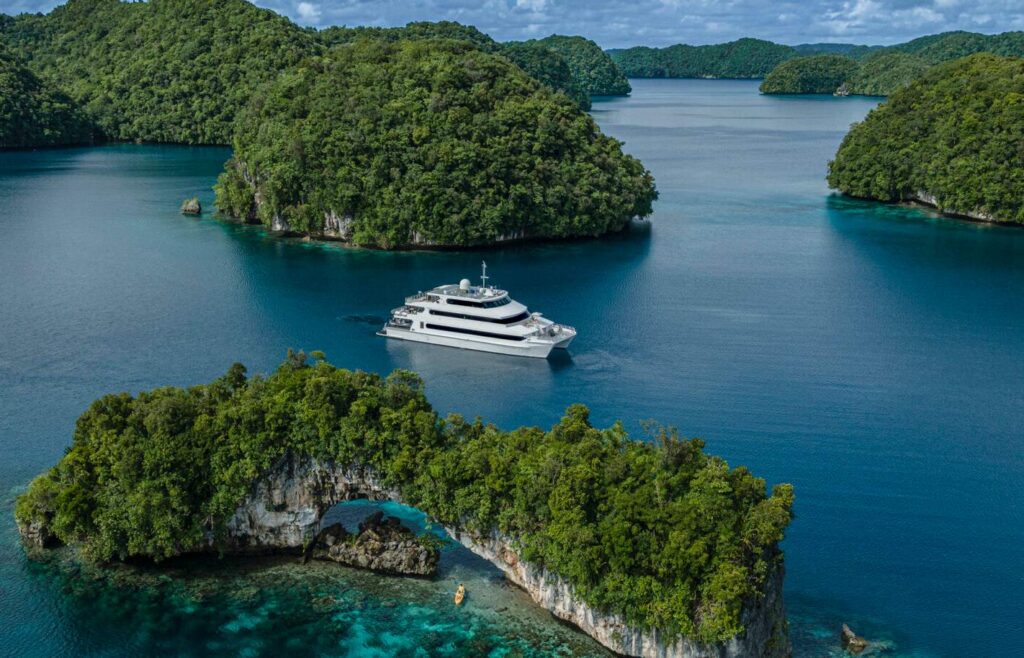Why we love New Zealand’s North Island
Discover its natural wonders, from epic diving to the country’s highest ski field.
Words by Ute Junker
Photos supplied
Kate Malcolm has had a good day in the office. “We saw 20 to 30 stingrays stacked up like squadron bombers beneath Northern Arch, a 12-metre wide underwater archway,” says the co-owner of Dive Tutukaka in New Zealand’s Northland Region. As winter draws closer, she is anticipating many more great dives lie ahead of her.
Diving in a New Zealand winter may sound like an endurance test but in Tutukaka, the waters are welcoming all year round. The waters are crystal-clear and surprisingly warm, thanks to the East Australian Current that sweeps down from the Coral Sea. Air temperatures are also milder than elsewhere in New Zealand – “in May and June, we’re still sitting around 20 degrees; the coldest we get is 15 or 16 degrees.”
That makes getting in the water an inviting prospect, particularly when the diving is as spectacular as it is here. Named as one of the world’s top 10 dive sites by Jacques Cousteau, the Poor Knights Islands, 45 minutes off the Tutukaka Coast, are home to an extraordinary array of marine life including both tropical and sub-tropical species. Divers and snorkellers alike are blown away by what lies beneath the waves.
“We have five species of wrasse, six species of moray earls, immense large numbers of schooling fish. We have pelagic fish coming through, dolphins and pseudo orcas, we have turtles. You can see big kingfish and pink maomao and tiny little gobies amid the rocks, which are beautifully encrusted with colourful algae and sponges. It’s pretty epic,” Malcolm says.
The Tutukaka Coast may be on the bucket list of serious divers around the world, but many Australian travellers are unaware of its existence. It’s just one of the underrated attractions tucked away on New Zealand’s North Island. Often overshadowed by the South Island’s magnificent fjords and snow-capped peaks, the North Island has plenty of natural wonders of its own.
There are the kauri forests, home to ancient trees that tower high overhead – some of New Zealand’s oldest specimens are found in the Waipoua Forest. There are high-altitude hikes through otherworldly landscapes such as the Tongariro Crossing, regarded as the country’s best one-day hike.
There are countless islands, from Waiheke Island, with its wineries and its boutique hotels, to Great Barrier Island, powered entirely off-the-grid and designated as a dark sky sanctuary; buzzing cities such as Auckland and Wellington; acclaimed wine regions such as Hawke’s Bay, Gisborne and Wairarapa.
And there is skiing. In fact, if you are looking for the highest ski fields in New Zealand, the North Island’s Mount Ruapehu is the place to go. Added bonus: this is the only place in the country that you can ski on an active volcano.
The volcanic terrain makes for a memorable skiing experience. “The topography gives you a real sense of journey,” says Travis Donoghue of Ruapehu Alpine Lifts. “On some slopes you have a sense of space; elsewhere the trails work their ways around crags, trough hidden troughs and valleys.”
Both of Ruapehu’s ski fields are covered by the same ski pass. Whakapapa is ideally suited for beginners through to medium skiiers; the more challenging Turoa also has the highest chairlift in the country. “Because we’re significantly higher than Coronet Peak – their ski area is roughly equivalent [in altitude] to where our car park is – our season is longer. We typically start a little later but we expect the season to run through to the end of October,” Donoghue says.
The long-running season makes Ruapehu a great base for exploring the North Island, according to Donoghue. “We have so many iconic landscapes around us, from the Waitomo Caves [where you can take a boat ride through glow worm grottoes] to Rotorua.”
Rotorua’s combination of geothermal fields – featuring spouting geysers and naturally-heated rivers – and Maori culture makes it a popular destination, but with 60 per cent of Maori people residing in the Bay of Plenty, Auckland, Waikato and Northland regions, Maori culture can be experienced across the island, with marae stays available from Waiheke Island near Auckland to Hokianga Harbour in Northland.
Even Lake Taupo offers First Nations experiences. “The carvings at Mine Bay are incredible,” says Vicki Febery of the work of Maori sculptor Matahi Whakataka-Brightwell, which include a 10-metre high carving of Ngatoroirangi, the Māori navigator who guided the Tūwharetoa and Te Arawa tribes to the Taupō area over a thousand years ago.
Febery is the Director of Tourism and Marketing at Westervelt, which runs the Poronui sporting lodge in the Taharua Valley between Taupo and Napier. A born and bred North Islander, Febery says that the beauty of the North Island lies in its diversity.
“You have these incredible landscapes, whether it’s the Coromandel Peninsula or the Bay of Islands, you have caves, you have geysers, you have Lake Taupo, the largest lake in the Southern Hemisphere. And the thing about the North Island is, everything is close together. You can do something different every day,” she says.
Poronui may be one of New Zealand’s smallest luxury lodges, with just seven rooms, but the lodge’s 6500-hectare estate offers a range of terrain, from rolling hills to native beech forest and even eucalypts, through which guests can go hiking, biking, hunting and fishing. It’s a combination that has ensured high repeat business for the lodge.



